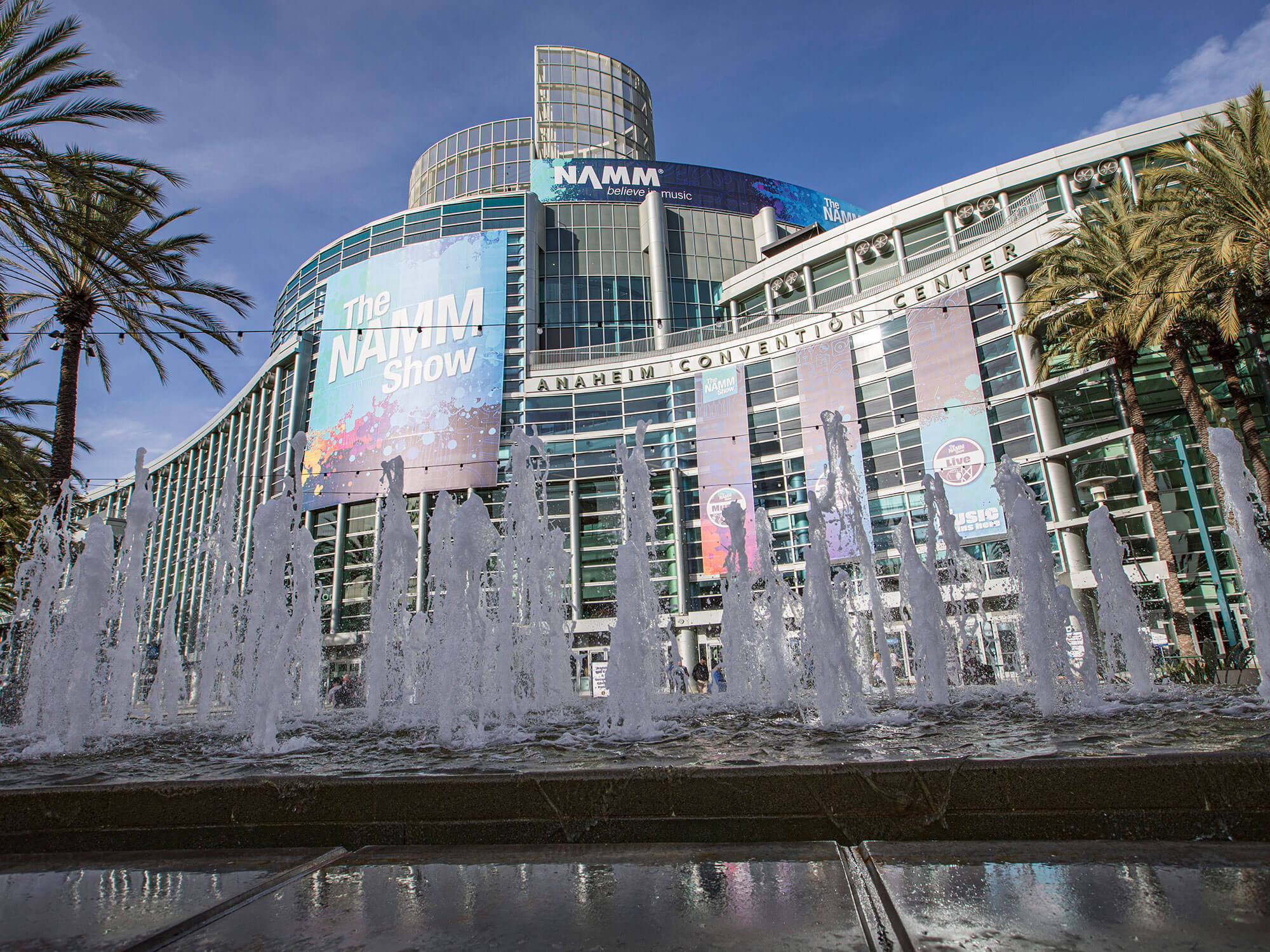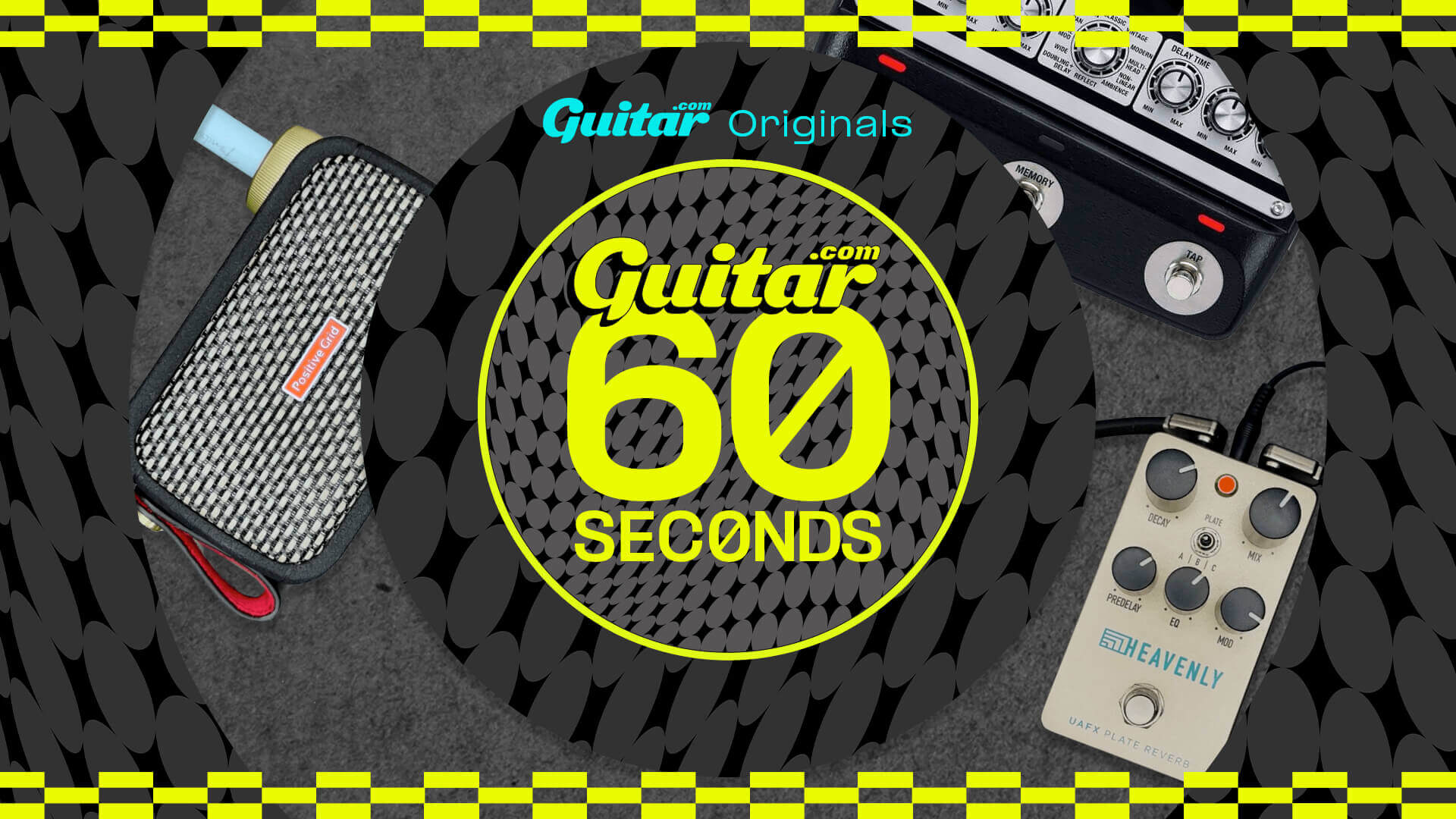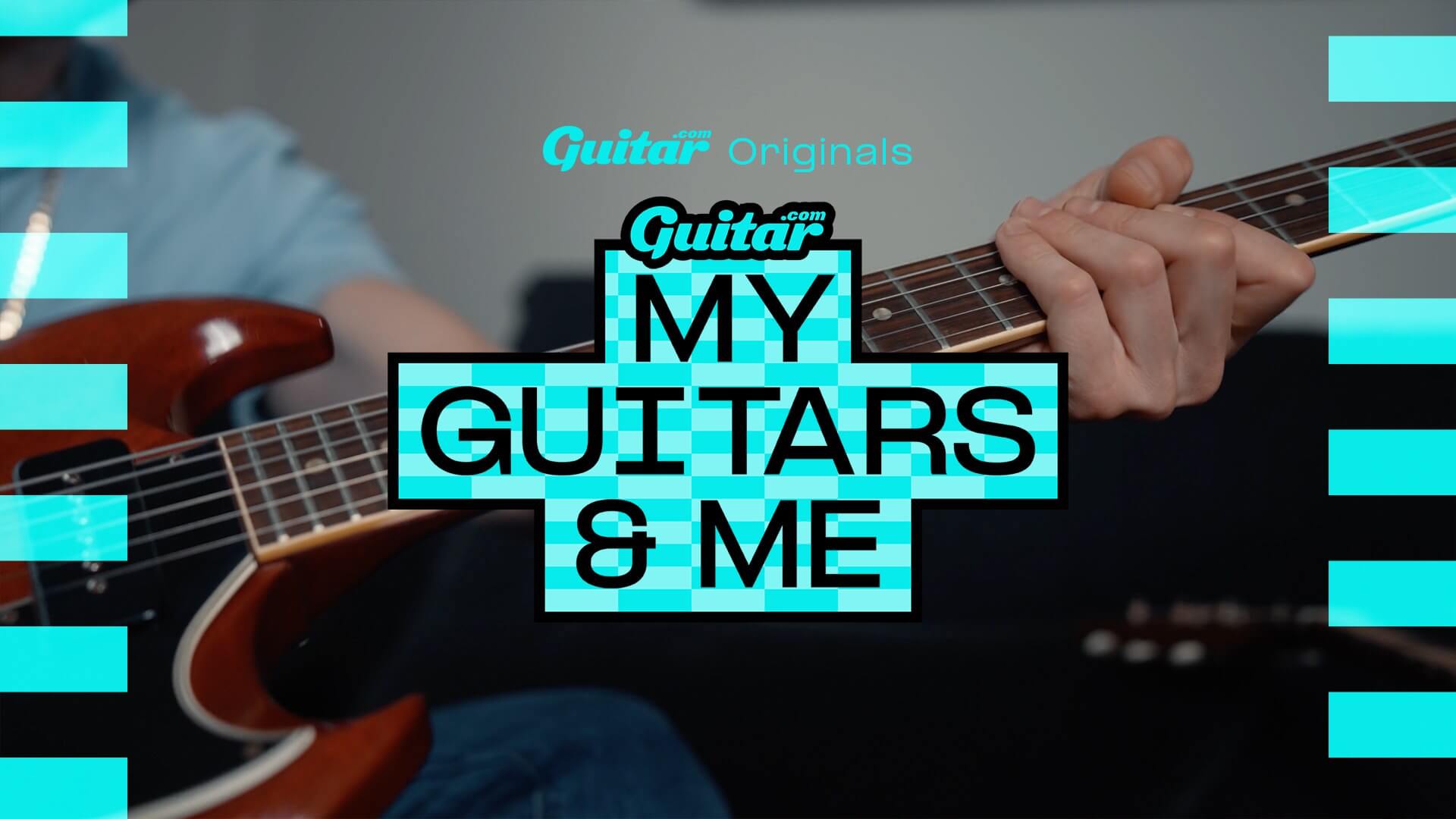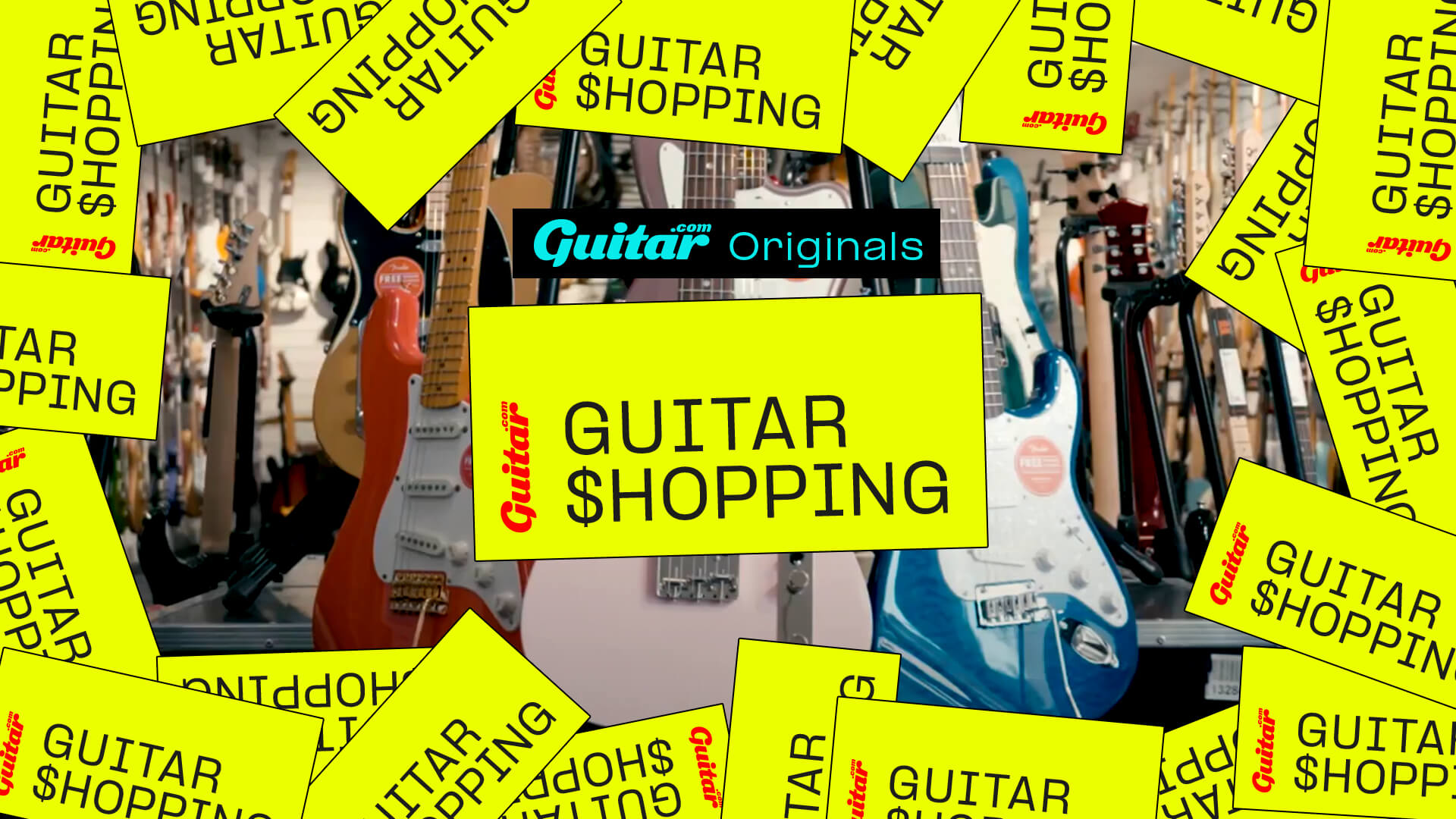Related Tags
What does the future hold for the NAMM Show after 2024?
A return to its traditional timeslot and renewed sense of community reinvigorated the world’s biggest MI gathering in 2024, but it’ll need more than that if it’s to avoid the fate of other major trade shows.

If, like me, you’ve attended the two NAMM Shows held at Anaheim’s cavernous Convention Center since COVID hit mere weeks after the 2020 edition, 2024 felt like a much-needed return to form.
The last two years of NAMM have been, to put it mildly, quite bleak – with the ongoing effects of the pandemic shifting the show out of its traditional January timeslot into June and April in 2022 and 2023 respectively, the whole equilibrium of the thing felt off.
A show that was traditionally used as a place to launch new products for the coming year found itself out of step with launch schedules, while the artist appearances that drove buzz and interest for the show outside of the MI world were notable by their absence due to the touring commitments that were underway by the middle of the year.

2024 fixed a fair bit of this, and the atmosphere around the show benefitted hugely as a result. For starters, the artists turned up in quite a big way this year. From Tosin Abassi to Adrian Vandenberg, Jay Leonard Jay to Hunter Hayes, Joey Landreth to Jared James Nichols, it felt like every time you walked past a stand there was something happening. Even if the BIG names of years past – John Mayer, Ed Sheeran etc – were still notable by their absence. Hell, even Stevie Wonder was back making his traditional pilgrimage to check out what was going on in the music technology end of Hall D.
And on the product side, the show’s timing felt like it gave some real impetus for brands to debut new gear at the show – from a very unexpected Jack White collaboration to a new high-end Pacifica, via a reborn classic from Guild and Alex Lifeson launching a guitar brand.
Hell, even the big names that weren’t in attendance took advantage of the NAMM buzz to sneak out some new and highly anticipated signature models – Fender/EVH debuting the new Wolfgang Van Halen model on the first day of the show, and Gibson stealth-launching the Dave Grohl Epiphone the day before in their Hollywood showroom, having bussed media in from NAMM especially.
Notable By Their Absence
But then there’s that awkward phrase again – ‘big names that weren’t in attendance’. Ever since the global pandemic demonstrated to the biggest names in the electric guitar world – namely Fender, Gibson and PRS – that they didn’t need to spend six or seven figures on a NAMM booth to make a big splash with their product launches, or get their dealers to make orders, there’s been a real sense that the show is missing something pretty fundamental.
Part of that is just in a space sense – in 2020 Gibson and Fender split the cavernous third floor of the Anaheim Convention Center between them, with PRS and Taylor occupying huge booths on floor two. None of these four had a public presence at the 2024 (though Taylor did have a small room for dealer meetings at the show, and showcased its 50th Anniversary range at an event at a hotel nearby).
You can add to this list the likes of Marshall, Orange, Cort, Framus/Warwick, Walrus Audio, JHS, Godin, Heritage/Harmony, Universal Audio, Chase Bliss, D’Angelico and more who all previously had sizeable booths at NAMM but didn’t feel the expense justified the return for 2024 and either scaled down dramatically or didn’t bother at all.
And this isn’t an attempt to name and shame anyone – a NAMM booth is a huge expense (even a small space is likely to set a brand back in excess of $20,000 before they’ve even built the thing) and the pandemic demonstrated that many of them don’t need that expense to have overflowing order books.
Indeed, I know of at least one major brand that hasn’t returned to NAMM purely because they’re still trying to clear the backlog of orders from COVID times, and don’t see the point in spending so much money and effort to make that wait-list even longer than it already is. But there’s a definite vibe that until at least some of these big name brands are back at the show, NAMM will be teetering on the precipice.

Renewed energy
But if the 2024 show proved anything, it’s that NAMM doesn’t need these big names for things to be meaningful and rewarding for the industry. There was a real and palpable sense of community among the attendees this year – especially on the guitar side – that the show was back in 2024.
NAMM is notoriously reticent to talk about hard and fast numbers, but wandering around the show floor it felt like there were more brands there in 2023, and more attendees too – booths felt crowded, getting around the show required you to skillfully navigate throngs of happy punters, and the hotel bars around Anaheim were jam-packed with well-lubricated people with laminated lanyards around their necks.
There was also an effort on the part of certain brands to create more community within the guitar end of Hall D – Boss jumping off the Roland stand to place itself independently at the heart of the effects brands for the first time felt really cool, and other brands such as Eastman did similarly to ensure that everything in guitar felt like it was in one place for the first time.
From a media perspective, I also have to take my hat off to NAMM for taking what was once the worst part of previous shows – Media Preview Day – and turning it into something worthwhile. What once was a scrum where MI media had to compete with every chancer with a purple badge for access to new products was turned into a series of mini-TED talks where the likes of Yamaha and Vox launched new products right there in front of the assembled media ranks in a way that felt meaningful.

Is it enough?
The above did feel like the exception to the rule, however – even amongst brands that launched stuff ‘at NAMM’, it was notable that very few of them actually did the launch at the show itself.
Most brands wanted to move their product launches away from the show itself in order to try and avoid competing with everyone else for attention once the show launched. It made something that used to be the preserve of big dogs who were confident of dictating the news agenda themselves, like Fender and Gibson, is now the default.
Even NAMM’s most faithful defender, Martin, decided to push out their biggest launches of 2024 in the days and weeks before the show. It meant that actual big NAMM launches were thin on the ground.
All of which begs the question, what is NAMM really for now? New CEO John T. Mlynczak has spoken about the show’s shift in focus to catering to influencers over the traditional pillars of dealers and media, and the steep increase in content creators at the show in recent years bears this out as a sensible strategy.
But ultimately, if all the show is doing is turning from churning out identikit booth videos from traditional media outlets to churning out even more identikit booth videos from every influencer with a tripod and an iPhone, is that really going to give the show longevity?

Already we’re starting to see some brands focus on other events – Sweetwater’s Gear Fest stole a march on NAMM in its attempt to cater exclusively to influencers and their needs, while plenty of influencers opted to spend their Saturday at Chase Bliss/OBNE’s Effector Market event down the road rather than wrestle with the crowds of general public day. (While we’re at it, 2024 absolutely proved that there’s no need for NAMM to be a four-day show – I didn’t meet a single person on the media/content creator side who was planning on attending on the Sunday, so why not just let exhibitors use that day to pack down their stands in peace?)
NAMM will be back in 2025, and on the basis of the general vibe of this year’s show I’d say there’s a fair chance some of the bigger names might want to return to cash in on that vibe. But there’s still significant work to make this show work in a post-pandemic environment.
In a world where major trade shows like E3 haven’t been able to carve out a useful niche for themselves in the new media landscape, it’d be churlish to assume that NAMM can simply pivot to influencers and hope to carry on regardless. There’s been a notable drop off in audience interest in the show since the big names dropped out – not just on Guitar.com but across the guitar media landscape – that indicates the average guitar fan is nowhere near as interested in NAMM without the big dogs.
The future of NAMM will likely be determined over the next few years – a positive 2024 shows that there’s still enthusiasm for the show from across the guitar world, but there’s still huge work to be done to prove it can be relevant on its own merits without the biggest names in the industry involved.



